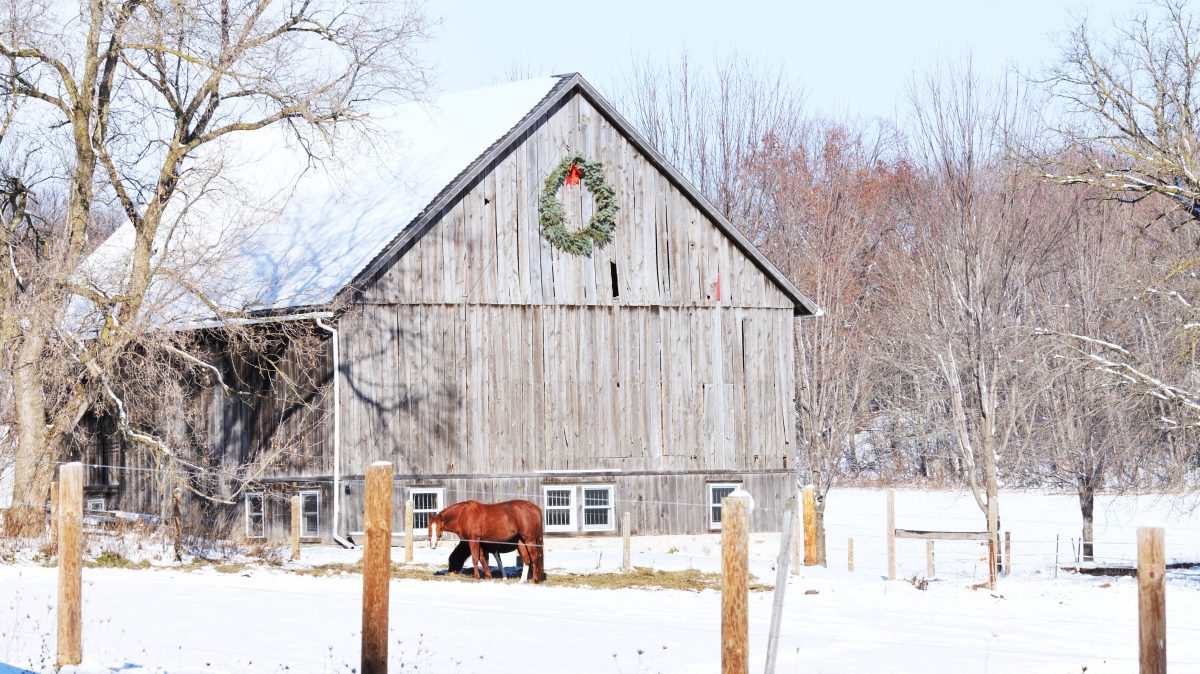Christmas Trees, the Focal Point of Holiday Traditions
Guest Author
Special Contributor to FB.org

photo credit: Getty
Guest Author
Special Contributor to FB.org
Download a 60-second audio version of this column at Giblin Focus.
O Tannenbaum, O Tannenbaum, Wie treu sind deine Blätter! Oh Christmas tree, Oh Christmas tree, thy leaves are so unchanging.
Christmas trees have become the traditional focal point of holiday traditions, and they are an important part of American agriculture. They 're grown in every state, planted on more than 350,000 acres, on 15,000 farms. More than 77 million are planted each year, at 2,000 trees per acre, and they normally take 6-8 years to mature. Normally, three seedlings are planted for every tree harvested. The industry employs more than 100,000 people.
Christmas trees transcend religion and culture. As a child, "White Christmas" composer Irving Berlin used to leave his Orthodox Jewish household on Christmas Eve to gawk at his neighbor 's Christmas tree and take part in their festivities. Today, many community and business trees are often called holiday trees to be inclusive of the whole season.
Christmas trees are a sensory experience that begins with the hunt for the "perfect" tree. For some the search begins the day after Thanksgiving, while others wait until Christmas Eve. About 25 to 36 million real Christmas trees, more than $1 billion worth, are sold each year through more than 13 million outlets.
The closest many urban dwellers come to a tree farm is likely a vacant lot or parking lot, with trees sold by a business or, in many cases, local churches or civic and charitable organizations. Some may venture to an actual tree farm, sometimes trudging through snow for hours, to find the right tree. The lucky few still go by foot, truck or horse and wagon to woodlands on the farm, or hike their own version of Walton 's Mountain. It is a rite of passage for a youngster to be handed the bow saw to cut a tree for the first time.
Once that perfect tree comes home, the smell of fresh-cut pine fills the house. Ornaments are unpacked—heirlooms and mementos collected over the years. Although sometimes preceded by tip-overs and mishaps, the twinkling eyes and the look of wonderment at the moment the lights are plugged in on the fully adorned tree is second only to the excitement of children racing to find their new treasures under it on Christmas morning.
The experience doesn 't always end with the holiday season. Many communities and neighborhoods host Christmas tree bonfires. Despite months of vacuuming or sweeping, old Christmas tree needles have a way of hiding, before being rediscovered by a sharp pierce when walking in stocking feet, or sitting on the carpet.
For a while, America started to lose interest in real Christmas trees. Artificial trees of various types have been around for hundreds of years. The first modern "artificial brush" tree was invented by the Addis Brush Company in the 1930s, using the same technology and materials it used to make toilet brushes. The aluminum tree was patented in the 1950s and sales exploded until the mid-1960s.
Then in 1965, Coca-Cola commissioned what is now the country 's second-longest running Christmas TV special. This December marks the 50th anniversary of "A Charlie Brown Christmas," based loosely on Hans Christian Andersen 's "The Fir Tree." In the story, Charlie Brown rejects Lucy 's demand to buy a pink aluminum tree and instead chooses a small, ugly live tree to protest the commercialization of Christmas. Thanks in part to Coca-Cola and Charles Shultz, interest in real Christmas trees was rekindled.
Real Christmas trees still outsell artificial trees by two or three to one, and for good reason. They fit modern consumer purchasing trends—they 're sustainable, recyclable and biodegradable. Of course, most people don 't think about those things. They think of the sight, smell, ritual, traditions and memories, as they delight in reliving the tradition every year.
Merry Christmas!
Robert Giblin writes, speaks and consults about agricultural and food industry issues, policies and trends.
Trending Topics
VIEW ALL